
You’re On Your Own
January 5, 2012
My daughter, Natasha, once came home from her weekly piano lesson and asked to use my metronome—a request from her teacher. I told Natasha that I didn’t own a metronome. At the next lesson, her teacher insisted I go out and buy one. The clerk at my local music store looked at me oddly as he rang up the sale. “Isn’t it a bit late in your career to be buying a metronome for the first time?”
Well, yes. I must have been over forty years old at the time. But let me explain. I have very mixed feelings about the metronome, mainly because it’s so… metronomic. Is there anything in our lives that has the exact, undeviating pulse of a metronome? Even the beating heart at rest has a certain amount of variation to it—so does the stride of a long-distance runner, Ravel’s Bolero, a Rock and Roll beat, Old Faithful geyser, and even the earth’s daily turn around the sun, be it ever so minimal. Then why do we put such faith in the metronome?
It wasn’t always this way, at least not until 1815 when Johann Maelzel patented a device to be used as a tool for musicians under the title, an “Instrument/machine for the improvement of all musical performances called the metronome”. The word “metronome” is of Greek origin: metron = measure, nomos = regulating. How did musicians keep a steady beat before 1815? And did they even want to? There are accounts of Ludwig van Beethoven, ironically the first notable composer to indicate specific metronome markings in his music, playing his own compositions on the piano with extreme freedom—in effect defying the very gadget that he found so useful.
I suppose composers put down metronome markings in order to suggest an ideal tempo. But is there such a thing as an ideal tempo, and if so can a composer pull it out of thin air, or in Beethoven’s case, being stone deaf, out of his inner ear, especially after the notes are already written down on paper? Even more confusing to performers is the fact that many modern day composers such as Bartok and Shostakovich have often brazenly ignored their own works’ tempo markings when recording them. Worse still, you might not even like their tempos. I recently patrolled YouTube looking for performances of Edvard Grieg’s Wedding Day at Troldhaugen, a piano work I happen to love. To my surprise, I found a recording of Grieg himself performing the work—but much too fast!!!
It’s fun to bad mouth the metronome but I must confess having used one long before I ever considered buying the thing. The traditional tempo indications such as Adagio for slow, Andante for a walking tempo, and Presto for fast give one only a general idea, but a quarter note = 126 or 82 or any other number allows for no wiggle room. The metronome’s pulse is non negotiable. That steady tic-tic-tic-tic helped steady my rhythm at its shakiest and at least gave me an entry-level tempo to consider. Easiest, of course, was to shamelessly bum a metronome off my fellow musicians, or that being unavailable, to rely on the metronome by another name, the clock. Since 60, for example, indicates a beat of one second duration, musicians know the useful trick of saying or thinking “one thousand, two thousand, three thousand” to pretty much give “one second, two seconds, three seconds”. Sing John Philip Sousa’s Stars and Stripes Forever and voilà: 120 to the beat. Hum your favorite disco song and you should be at 126.

These days, I tend to regard metronome markings a bit more cavalierly. For example, I’ve been working on Bela Bartok’s Sonata for Solo Violin lately. In practicing Melodia, the Sonata’s third movement, I had carelessly ignored Bartok’s marking of 90-92 to the eighth note, but also his more traditional tempo indication of “Adagio”. I simply played what I felt. But when I checked, my tempo happened to fall quite close to Bartok’s metronome number. This leads me to believe that while 90-92 to the beat gives an exact tempo and “Adagio” a more general one, the intrinsic structure of music, its DNA if you will, has an inevitable tempo embedded in it as dictated by the notes alone. Of course, my “inevitable” tempo might not be your “inevitable” tempo, otherwise we would descend into a PC world of tempo sameness—a dreary thing to contemplate.
So is the metronome friend or foe? I’ll let the pianist Arthur Rubinstein weigh in with the last word on this. In the early stages of our Guarneri String Quartet’s career, we had the extreme good fortune to record ten different chamber music works with Rubinstein and to perform with him in New York City, London, and Paris. It was a chance of a lifetime to make music with a man who was more than a great pianist and more than a fine musician. Rubinstein was an artist who could create magic when he played. Yes, he produced a famously opulent sound and his musical taste was impeccable, but what struck me most was the unerring suppleness of Rubinstein’s phrasing and his ability to tease out the very essence of a rhythmic figure. Rubinstein possessed a kind of joyful daring in the way he played with time.
In preparation for our Paris concert, we rehearsed for an entire day at Rubinstein’s elegant Parisian home. With a backdrop of impressionist art hanging from the walls, we worked through the entire program, stopping only for a gourmet lunch served by Rubinstein’s wife, and for hugely entertaining stories that he showered on us between movements. As always, Rubinstein’s playing was alive with intelligence and fantasy, but often with a distinct disregard for the printed tempos. At one point, we in the Guarneri Quartet stopped playing, gathered around the piano, and pointed out to Rubinstein that we were not doing the indicated metronome marking in one particular movement of Fauré’s C Minor Piano Quartet. Rubinstein thought about it for a moment and looked up at us slyly. Then he said, “Fauré only meant the metronome marking for the very first measure, you know. After that, you’re on your own.”
Subscribe
Sign up to receive new stories straight to your inbox!








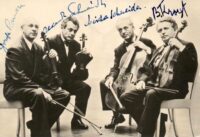



























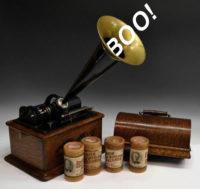
















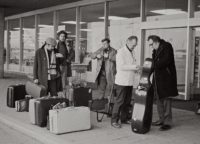



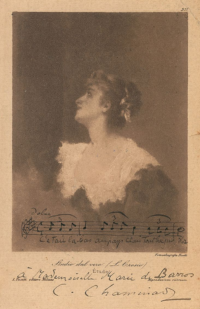







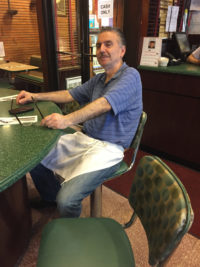



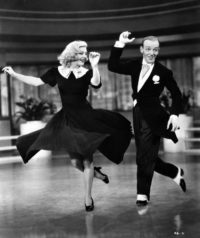







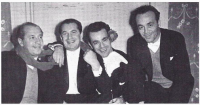



















































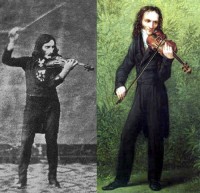



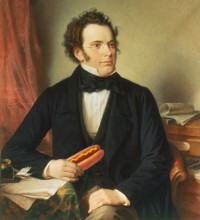

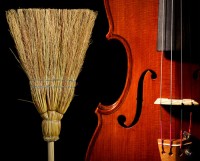





























1 Trackbacks/Pingbacks
Comments
Arnold, I’m fairly certain that your friend Irv Fink intended that the same wisdom be applied to his SQP idea of red lining: “Only for the very first measure, you know. After that you’re on your own.”
Or perhaps just play along with Ligeti’s Poème Symphonique and 100 of the pesky devices.
” I didn’t mind him saying what notes to play, but, when he started talking about rhythm, I had to leave”.
arnold, if everything is about tension and relaxation, as i’m beginning to think, then there’s no place for metronomes… sandy
This is fascinating, and thank you for the closing quote by Artur Rubinstein. I like to use a metronome when practicing John Cage’s 4’33 … (great blog!)
Milton Katims wrote this about Toscanini (in B.H. Haggin’s book “Arturo Toscanini – Contemporary Recollections of the Maestro”):
“There is also the belief that he [Toscanini] played everything strictly in time, as if with a metronome. Wrong! He played with a rubato so subtle, as natural as breathing, that it was the naturalness you were most aware of, not the freedom. Once when I was discussing a score with the Old Man, he said of a particular passage, ‘This must be – assolutamente preciso – like with a metronome. Here, I show you.’ He reached over and selected the appropriate tempo on his electric metronome and began to play the passage in question. But after only a few beats of the metronome he was no longer with it. He shut it off and said, ‘But you can’t be a machine!’
Hope this is of interest and best regards from over here,
David Mendes
A great Poster!
And what a wonderful Idea — The Arnold String quartet.
At this point you certainly earned your right to assert your artistic sensibility in lieu of Democracy..
So — right on.
Looking very much forward to your first concert.
Arnold:
Well, I knew a graduation address by you would be significant, and you didn’t let me down! What a wonderfully engineered call to arms for the graduating students. I have just sung in the Mozart requiem at our small church here in the Berkshires, and the morning after the concert I actually lit a candle of gratitude for having Mozart in our lives. I completely agree with the New Yorker joke!
I am deeply touched by your tracing of the role music has and will continue to play in our lives.
The young girl running up the isle, and the recognition of beauty by William Styron are particularly
vivid descriptions of the power of music!
wendy
So true. As a kid I played trbnoome but I was pretty horrible at it, probably in some part due to my parents not being particularly interested in it. Later I picked up guitar, which my parents loved, and I did much better. Thanks.
Leave a Comment
*/